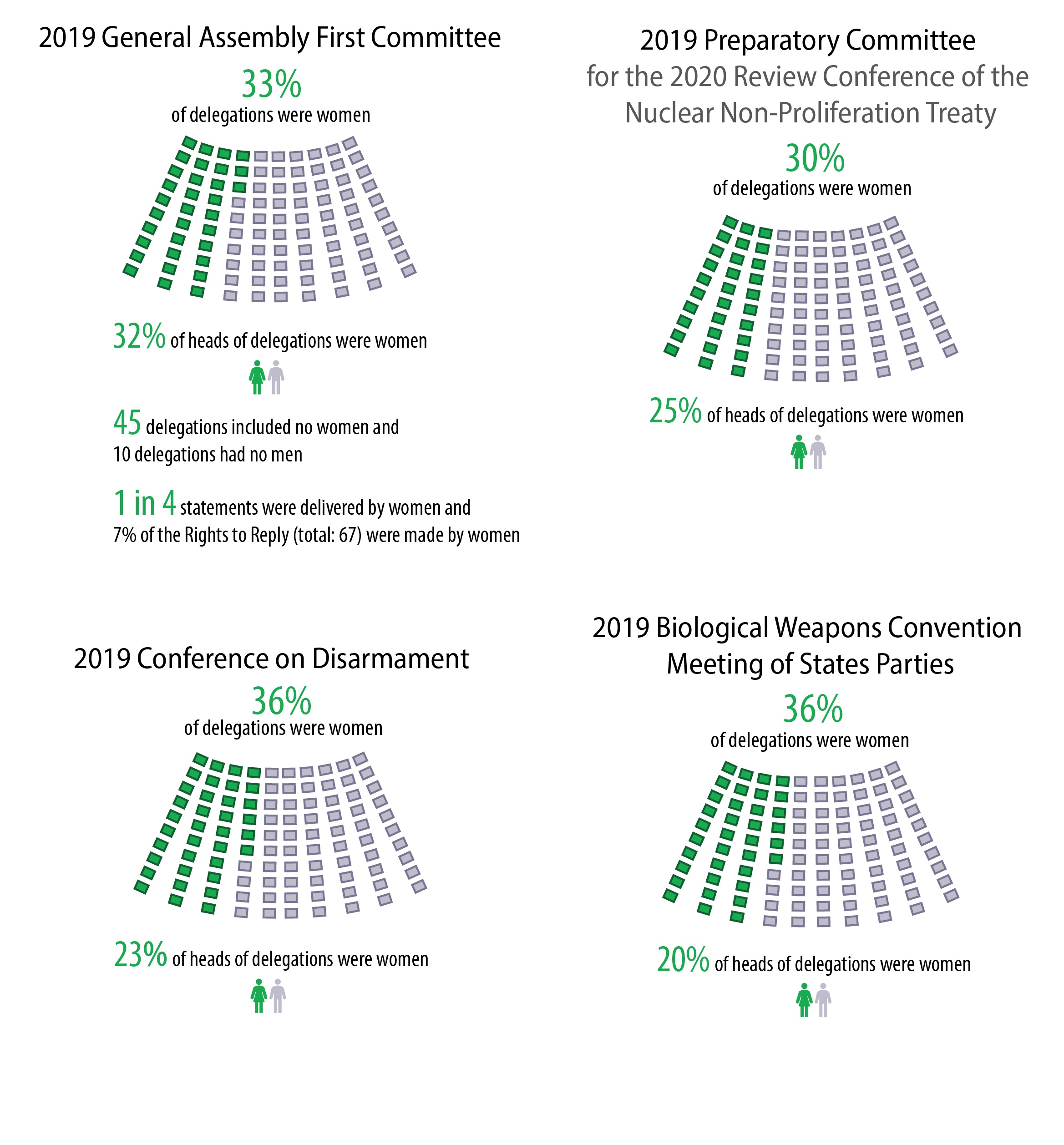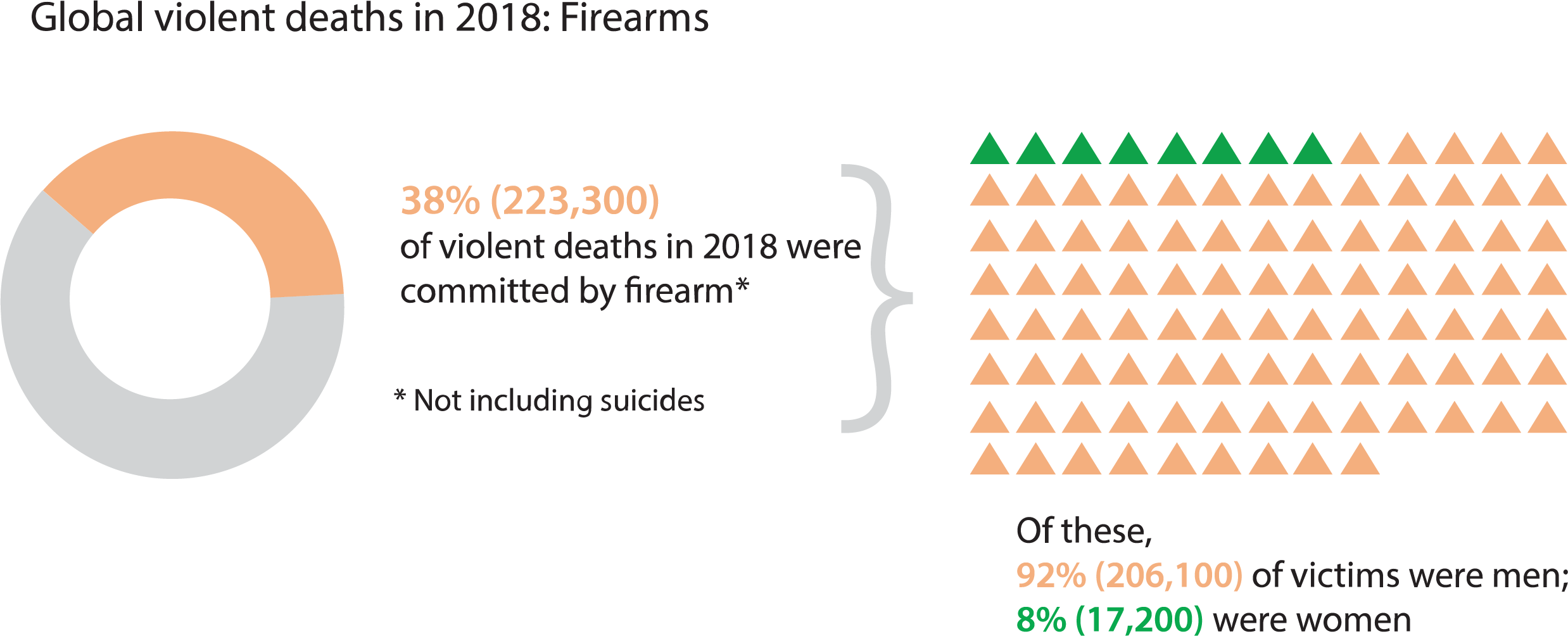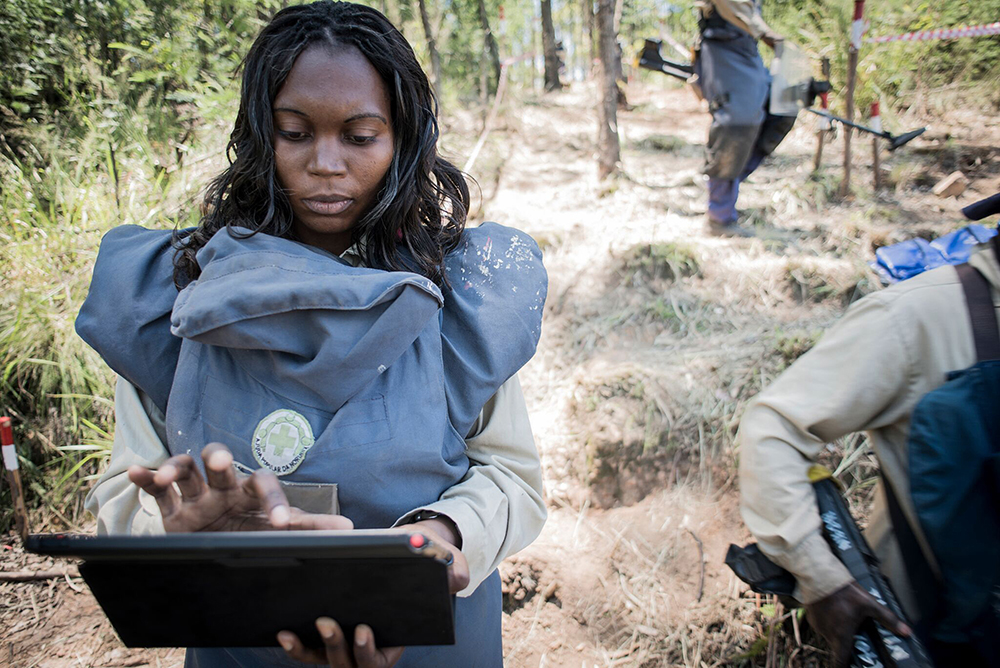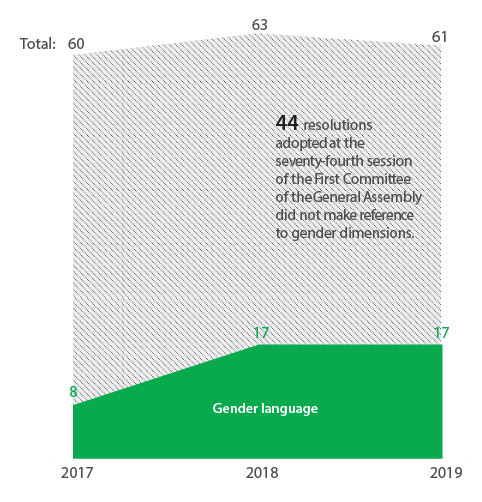Gender equality is not only a moral imperative and fundamental human right, but also a powerful tool for accelerating progress in all areas of the United Nations’ work, including peace and security. Strengthening the role of women and diversity of voices in disarmament will advance our collective goals in disarmament, non-proliferation and arms control
In the year leading up to the twentieth anniversary of Security Council resolution 1325 (2000) on women, peace and security, a growing number of Member States demonstrated interest and support in promoting the inclusion of gender perspectives in disarmament and arms control processes in order to achieve more sustainable and effective outcomes.
Women remained significantly underrepresented in multilateral disarmament forums and decision-making during the year, according to findings by the United Nations Institute for Disarmament Research. Calls for women’s full and equal participation increased, as did the understanding that women’s participation needs to be meaningful. The General Assembly prioritized women’s equal participation in multiple contexts, including for the first time in ammunition management policy, in the framework of the Convention on the Prohibition of the Development, Production and Stockpiling of Bacteriological (Biological) and Toxin Weapons and on Their Destruction (Biological Weapons Convention) and for the groups of governmental experts on nuclear disarmament verification. Women’s participation was also prioritized across the world in relevant trainings, courses and other activities, contributing towards gender equality and women’s empowerment in the field of disarmament, non-proliferation and arms control.


Ensuring women’s equal, full and effective participation in disarmament, non-proliferation and arms control is a priority within the Secretary-General’s Agenda for Disarmament. Moreover, United Nations officials, Member States, regional organizations and civil society have repeatedly called for concerted action to promote gender equality in disarmament as a contribution towards sustainable peace and security, as well as the achievement of Goal 5 on gender equality of the 2030 Agenda for Sustainable Development.
Despite growing attention to the issue, however, the year 2019 saw no significant progress towards achieving women’s equal participation in multilateral disarmament meetings. Female delegates generally made up only about one third of the diplomats accredited to arms control and disarmament conferences, and even fewer women led their delegations. Although the proportion of women members in groups of governmental experts increased in 2019 as gender considerations were more systematically introduced into selection criteria, women still made up only about a quarter of all experts in such groups active during the year.
Prevailing data suggests that continued, concerted efforts by all stakeholders will be necessary to attain gender parity within disarmament, non-proliferation and arms control mechanisms and decision-making processes.
While gender considerations were featured prominently in multilateral small arms control processes and forums, there was increased recognition that additional in-depth research and policymaking efforts were necessary to ensure gender-responsive approaches to addressing weapons of mass destruction and new and emerging technologies. That growing recognition was informed, in part, by a growing awareness of the differential impacts of weapons on women, men, girls and boys.

Armed conflict and armed violence affect women and men differently.
In 2018, firearms were used to kill about 223,300 people—38 per cent of all victims of lethal violence, including from direct conflict and intentional homicide. Men represent the vast majority of those deaths, an estimated 92 per cent. (Small Arms Survey, Global Violent Deaths Database) .
But for women, guns and violence between intimate partners often form a deadly combination. In homicides perpetrated by an intimate partner or family member in several countries, killings are more likely to be carried out with a firearm when the victim is female (United Nations Office on Drugs and Crime, Global Study on Homicide, 2019).
In 2019, new projects, capacity-building measures, and initiatives were implemented at the community, national and regional levels to support gender- responsive commitments, including in the fight against small-arms trafficking and misuse; armed-violence reduction; disarmament, demobilization and reintegration; security sector reform; and mine action. Member States strengthened the formal recognition of linkages between arms control and the prevention of gender-based violence, including through resolutions of the General Assembly and Human Rights Council, and they expressed support for national arms control efforts aimed at preventing such violence. At the fifth Conference of States Parties to the Arms Trade Treaty, where gender and gender-based violence were the thematic priority, participants agreed on recommendations and actions to, inter alia, improve the gender balance in future conferences and promote an increased understanding of the gendered impact of armed violence in the context of the Treaty.

Mine clearance in Mozambique by the Norweigian People’s Aid, 6 November 2019.
Photo: Norwegian People’s Aid / Ministry of Foreign Affairs, Oslo

Successfully tackling gender-related disarmament issues—for example, the different impacts of weapons on women and men, as well as the need to ensure women’s equal and meaningful participation in disarmament—requires addressing and integrating those considerations in many areas of work. Since first adopting resolution 65/69 of 8 December 2010, “Women, disarmament, non-proliferation and arms control”, the General Assembly has referenced gender and women’s participation in a growing number of disarmament-related resolutions.
Of the 61 resolutions that the General Assembly First Committee adopted at its seventy-fourth session in 2019, 17 included language on gender and 4 of those did so for the first time and 2 updated formulations on gender. This marked an increase since 2017, when the Committee adopted eight resolutions with references to gender or women.
Of the resolutions containing gender language in 2019, 10 referred to the equal participation of women and men in disarmament and 4 referenced their equal representation. Additionally, four of the resolutions mentioned the gendered impact of weapons, 2 referred to the contribution or role of women in disarmament and 3 referenced the mainstreaming of gender dimensions in the field.
Also in 2019, Member States removed relevant language from one resolution.
Meanwhile, various stakeholders made efforts throughout the year to promote a systematic gendered approach in the area of disarmament. Member States and the United Nations Institute for Disarmament Research organized a number of events to that end, including in the frameworks of the Biological Weapons Convention and the Treaty on the Non-Proliferation of Nuclear Weapons. In an op-ed written for the online magazine Europe’s World, the High Representative for Disarmament Affairs called for gender to be placed “at the heart of arms policy”, and the International Gender Champions Disarmament Impact Group issued new resources on the relevance of gender perspectives to the field as a whole.

The United Nations system also undertook further efforts to achieve the equal participation of women and men in disarmament processes and to address the gendered impacts of arms. The seventy-fourth session of the General Assembly First Committee adopted 17 resolutions containing references to equal gender representation or participation, gender considerations, the gendered impact of weapons or gender-based violence. Of those resolutions, four contained such language for the first time. In addition, a range of entities within the United Nations system implemented gender-sensitive approaches and trainings within disarmament-related areas of work